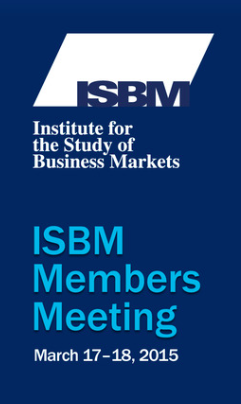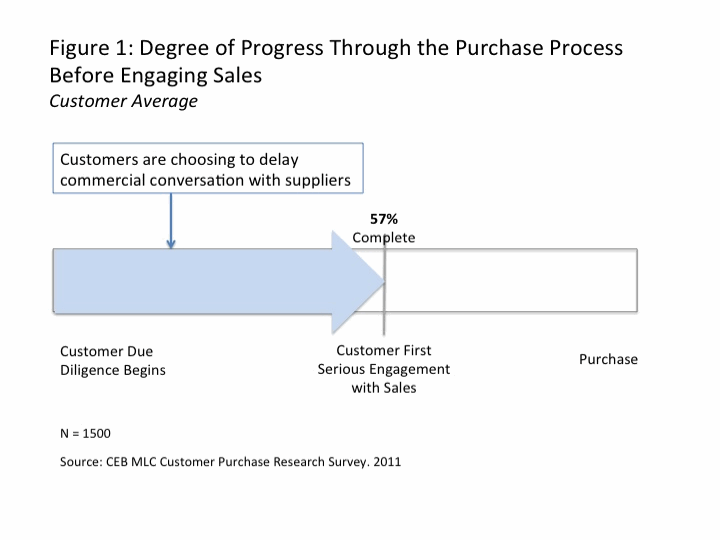Last week I had the opportunity to attend two conferences that spanned the horizon of marketing. I went from “hoodies” at SXSW to “blue blazers” at the Institute for the Study of Business Markets (ISBM) Winter Member Meeting
Attendees at SXSW Interactive were young digital marketers, at the early stage of their careers. The ISBM crowd was comprised of mostly senior-level executives with 20 to 30 years of experience working for established companies.
Below are some insights from both of the events:
- Marketing is a tech wonderland. I had the chance to wander the event floor at SXSW, marvel at all of the new technologies, play with new apps, as well as attend a couple ofsessions by new tech vendors. The theme of the ISBM event was Analytics & Analysis, and I got more than my fair share of data analytics, business intelligence, econometric modeling … you name it. If you still think that half of your marketing budget is wasting away, but you don’t know which half, you’re behind the times.
- Analytics and dashboards are foundational. I saw a great presentation by Dell, which showed how the company has now mapped buyers across the buying process, complete with understanding their needs, time spent at each stage and how to optimize the experience. Likewise, Wesco and Teradata shared a wonderful journey of how Wesco put into place the tools needed to become a data-driven marketing group, enabling the company to tie its activities to business outcomes, or in this case, revenue. From what I heard and saw, companies have built the foundation to pull, analyze and report marketing performance data. Some have even made the leap into forecasting and predictive modeling.
- Investment is still a challenge. A thread ran through the ISBM event concerning the challenge of securing the funding to buy new marketing tools and/or staffing teams. Despite several speakers presenting solid case studies with clear ROIs, they were still challenged with getting the support and funding needed to continue making progress.
After having time to digest the week’s sessions, I still had a few lingering questions in my mind concerning what I heard and saw. For example:
- Is there a lack of organizational acceptance and/or appreciation of marketing insight and activities? The question that popped into my head regarding the funding challenge was, “Are marketers able to make the business case in a way that makes executives want to fund their request?” The other issue was marketing’s ability to communicate effectively across the organization based on it
 s culture. One speaker, Bill Rozier from Ciena, provided insight into how to do it effectively. Bill created a lead generation report in an easy to understand PowerPoint slide. As Bill said, “The sales team has to be able to get all the information they need in 30 seconds or less, or we’ve lost them.” Since Bill’s new report launched less than two months ago, lead reconciliation rates have gone from 13 percent to over 70 percent.
s culture. One speaker, Bill Rozier from Ciena, provided insight into how to do it effectively. Bill created a lead generation report in an easy to understand PowerPoint slide. As Bill said, “The sales team has to be able to get all the information they need in 30 seconds or less, or we’ve lost them.” Since Bill’s new report launched less than two months ago, lead reconciliation rates have gone from 13 percent to over 70 percent. - Is there, or will there be, a communication gap between the “Hoodies” and “Blue Blazers”? It’s not necessarily a generational one, although there is that. Rather, it’s one based on what they view to be important and valuable. I saw some great social media tools at SXSW that provided deep insights into audience engagement and buyer intent. But close to half the marketing executives at the ISBM meeting had revenue targets, and almost all had lead targets. It made me think that there may be, or may soon be, a potential communication issue between the digital-savvy “engagement and intent” crowd and the “lead and revenue” veterans. From what I saw, there is still work to be done to close the gap between social media results and the connection to key performance metrics valued by marketing executives.
- Will marketing overplay analytics? Perhaps my biggest concern reflecting on the week is twofold. In business-to-business companies with strong product (and engineering) cultures that are empirically driven, will the utilization and reliance on new marketing tools and data limit an organization’s creativity, and/or innovation? The second concern has to do with organizations where marketing feels like they are under attack. Will marketers use their new reporting capabilities as a defense mechanism, hiding behind the data, instead of using it proactively to provide the organization with new insights and opportunities?
Despite these and other questions still weighing heavily on my mind, I did reach two solid conclusions. The first, Austin is by far the best food-truck town in the United States, and the second is that Tampa’s weather is the salve for the burn of the harsh Northeast winter — a point brought home to me as I returned from Tampa just in time for our first-day-of-spring snowstorm.



